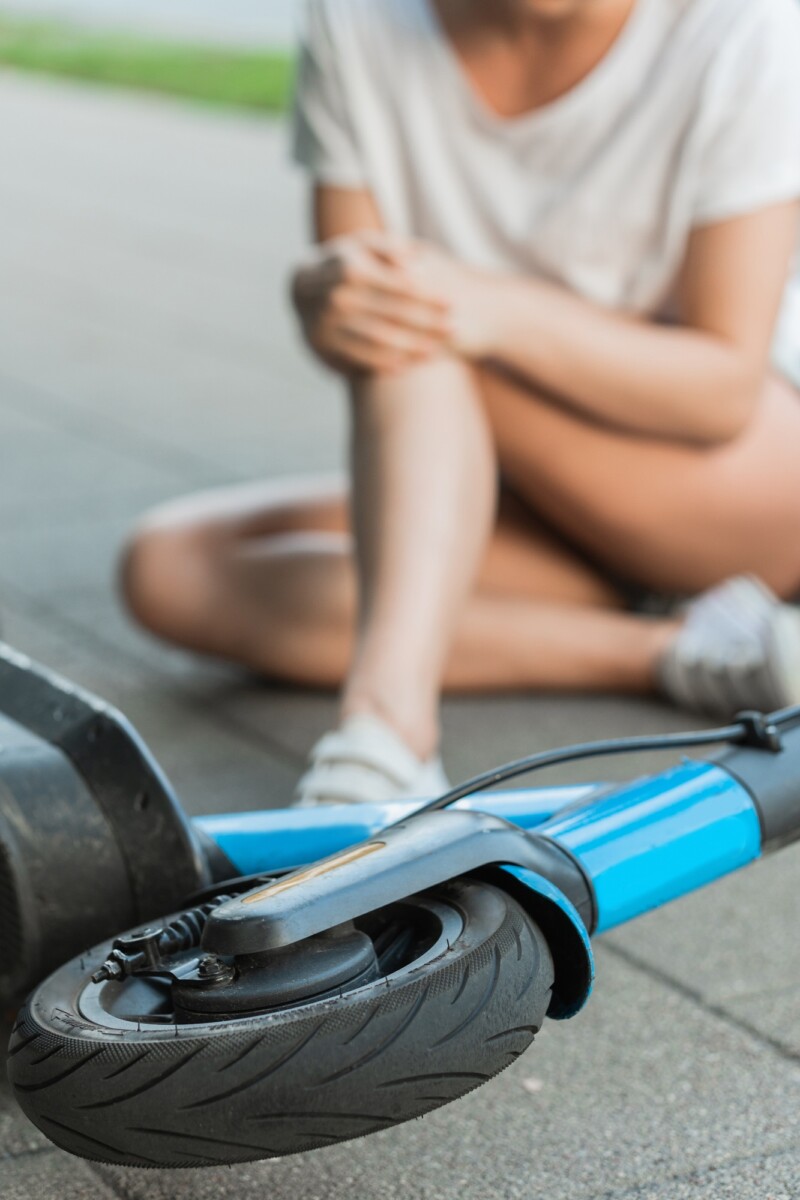Knee on the Scooter: Unlocking the Secrets of Smooth Rides
[tta_listen_btn]
Recovering from a lower leg injury or surgery often requires a non-weight-bearing period, during which mobility can be challenging. Traditional aids like crutches have been the go-to solution for decades. However, knee scooters, also known as knee walkers, have emerged as a popular alternative, offering enhanced comfort and mobility. This comprehensive guide delves into the world of knee on scooter, exploring their benefits, comparisons with other mobility aids, exercises to perform while using them, and answers to frequently asked questions.
What is a Knee Scooter?
A knee scooter is a wheeled mobility device designed to assist individuals who cannot bear weight on their lower leg or foot. Unlike crutches that require upper body strength and can be cumbersome, knee scooters allow users to rest their injured leg on a padded platform while propelling themselves with the healthy leg. This design offers a more stable and comfortable means of transportation during the recovery period.
Benefits of Using a Knee Scooter
Enhanced Mobility and Independence
Knee scooters provide users with the freedom to move around without relying heavily on upper body strength. This independence is particularly beneficial for performing daily tasks, attending work, or engaging in social activities.
Increased Comfort
The padded platform supports the injured leg, reducing discomfort associated with traditional crutches. Users often find knee scooters less taxing on the body, leading to a more pleasant recovery experience.
Stability and Safety
With a sturdy frame and four wheels, knee scooters offer greater stability compared to crutches, minimizing the risk of slips and falls. This stability is crucial for individuals navigating various terrains during their recovery.
Hands-Free Convenience
Some knee scooters are designed to be hands-free, allowing users to carry items, open doors, or perform other tasks without the limitations imposed by crutches.
Comparing Knee Scooters and Crutches
When deciding between a knee scooter and crutches, it’s essential to consider factors such as comfort, mobility, and personal lifestyle.
Ease of Use
Knee scooters are generally easier to maneuver and require less physical effort than crutches. Crutches demand significant upper body strength and can cause fatigue over time.
Comfort Level
The ergonomic design of knee scooters offers a comfortable alternative to the underarm pressure and potential chafing caused by crutches.
Suitability for Various Terrains
While knee scooters perform well on flat, smooth surfaces, they may be challenging to use on uneven or rough terrains. Crutches, though more physically demanding, can navigate a wider range of surfaces.
Storage and Portability
Crutches are lightweight and easy to transport, whereas knee scooters are bulkier and may require more space for storage. However, many modern knee scooters are foldable, enhancing their portability.
Exercises to Perform While Using a Knee Scooter
Maintaining physical activity during recovery is vital for overall health and can aid in the healing process. Here are some non-weight-bearing exercises suitable for individuals using a knee scooter:
Upper Body Workouts
Engage in seated exercises such as bicep curls, shoulder presses, and tricep extensions using light weights or resistance bands. These exercises help maintain upper body strength without compromising the injured leg.
Core Strengthening
Perform seated abdominal exercises like seated twists or leg lifts to strengthen core muscles, which are essential for overall stability and balance.
Flexibility and Stretching
Incorporate gentle stretching routines to maintain flexibility. Focus on areas that are not affected by the injury, ensuring that movements do not place stress on the recovering limb.
Before starting any exercise regimen, consult with a healthcare professional to ensure the activities are safe and appropriate for your specific condition.
Medicare Coverage for Knee Scooters
Understanding insurance coverage for medical equipment is crucial for managing expenses during recovery.
Does Medicare Cover Knee Scooters?
As of 2025, Original Medicare Part B does not cover the cost of purchasing or renting knee scooters, as they are not classified as durable medical equipment under Medicare guidelines. Beneficiaries are typically responsible for the full cost of a knee scooter.
Alternative Coverage Options
Some Medicare Advantage plans or supplemental insurance policies may offer partial or full coverage for knee scooters. It’s advisable to contact your insurance provider to explore available options.
Recent Developments and Trends
Knee scooters have gained attention not only for their practicality but also for their presence in popular culture.
Celebrity Usage
In December 2024, Kim Kardashian was seen using a knee scooter following a foot injury. She attended the opening of her SKIMS flagship store in New York City, demonstrating that mobility aids can be both functional and fashionable.
Technological Advancements
Manufacturers are continually improving knee scooter designs, incorporating features such as all-terrain wheels, foldable frames, and enhanced braking systems to cater to diverse user needs.
FAQs
Will Medicare pay for a knee scooter?
No, Original Medicare Part B does not cover knee scooters. Beneficiaries are responsible for the full cost unless they have additional insurance that offers coverage.
Is a knee scooter good exercise?
While primarily a mobility aid, using a knee scooter can contribute to physical activity by engaging the muscles of the healthy leg and core during movement. However, it should not replace a comprehensive exercise routine.
Is a knee scooter easier than crutches?
Many users find knee scooters easier to use than crutches due to increased stability and reduced physical exertion. However, individual experiences may vary based on personal preferences and specific injuries.
What is the knee scooter called?
A knee scooter is also commonly referred to as a knee walker. Both terms describe the same mobility device designed to aid individuals with lower leg injuries.
Conclusion
Knee scooters have revolutionized mobility for individuals recovering from lower leg injuries, offering a comfortable and efficient alternative to traditional crutches. By understanding their benefits, comparing them with other mobility aids, and incorporating appropriate exercises, users can enhance their recovery experience. Staying informed about insurance coverage and recent developments ensures that individuals can make the best choices for their mobility needs.
Ready to compare Medicare plans? Get your free quotes now at Newmedicare.com or call (833) 203-6742!






